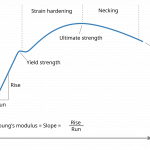Key Takeaways
- Frequency peaks reveal critical insights into the structural integrity and performance of a material during testing.
- Shifts in frequency peaks often indicate changes in stiffness, density, or internal structure over time.
- Understanding and tracking these patterns can help prevent costly product failures and improve quality control.
- By leveraging modern resonance frequency testing, manufacturers can enhance efficiency and reliability in production.
Understanding Frequency Peaks in Practical Terms
In the world of material testing, a frequency peak is not just a spike on a graph – it’s a telltale sign of how a material is behaving under specific conditions. Whether you are working with ceramics, metals, or advanced composites, frequency peaks offer valuable data about the quality and durability of your product. A well-analyzed frequency peak helps identify potential flaws before they evolve into costly issues.
Why Frequency Movement Matters for Your Business
Over time, or under specific operational conditions, frequency peaks can shift or move. This frequency movement is often a direct consequence of physical or structural changes within the material, such as stress, fatigue, temperature variation, or microstructural alterations. For businesses, recognizing these changes early can mean the difference between proactive maintenance and unexpected downtime.
The Cost of Ignoring Frequency Changes
Neglecting to track frequency movement can have serious consequences. Undetected issues may lead to reduced product lifespan, safety hazards, and reputational damage. For industries such as aerospace, automotive, manufacturing, and construction, quality control through frequency analysis is no longer optional—it’s a competitive necessity.
The Science Made Simple: Cause and Effect
From a causal perspective, every frequency peak represents the natural resonant frequency of a material. Small variations in a product’s physical structure will alter how vibrations pass through it, shifting that peak. For example:
- Increase in stiffness – Frequency peak may move upward.
- Decrease in density – Frequency peak may shift downward.
- Internal damage or cracks – Multiple peaks or irregular patterns can appear.
Applications Across Industries
Resonance frequency testing is not just for scientists—it’s actively transforming industries. From verifying the uniformity of 3D-printed parts to checking the reliability of ceramic components in extreme heat, the ability to interpret frequency peaks provides measurable business benefits. Our innovative testing technology makes these complex processes fast, efficient, and reliable.
Real-World Example
Consider a manufacturer producing high-performance composite parts for the automotive sector. By periodically testing samples and tracking their frequency peaks, the engineers detected a downward shift in a subset of units. Early detection meant that the batch could be corrected before reaching clients—saving the company from potential recalls and safeguarding its brand reputation.
Marketing Advantage: Communicating Quality Through Data
In today’s competitive marketplace, communicating quantifiable quality assurance gives customers confidence. Demonstrating that your materials are tested and validated using a proven and traceable method—like tracking frequency peaks—can set you apart. Clients are more likely to trust and invest in suppliers who can show hard evidence of reliability and performance.
Best Practices for Monitoring Frequency Peaks
- Regularly test samples throughout production runs.
- Use consistent methods for striking, capturing, and analyzing peaks.
- Track historical data to identify long-term trends.
- Investigate sudden peak changes immediately to prevent failures.
Tools and Methods That Make the Difference
Advanced testing devices make it possible to capture frequency peaks with remarkable accuracy in seconds. The Impulse Excitation Technique (IET) is a prime example, delivering efficiency and repeatability that help businesses stay ahead in quality assurance. Our complete product range ensures that no matter your industry, you can benchmark your materials with precision.
Turning Scientific Insight into Business Growth
By understanding the cause-and-effect relationship behind frequency peaks and their movement, companies can transform raw scientific data into actionable business strategies. Whether it’s reducing returns, improving product lifespan, or optimizing production methods, harnessing the power of frequency analysis brings measurable ROI.
FAQ
What does a shift in frequency peak indicate?
A shift in the frequency peak usually indicates a change in material properties such as stiffness, density, or internal structure. By interpreting this movement, engineers can detect defects, wear, or variations in production quality.
How often should frequency analysis be performed?
For critical applications, frequency analysis should be done during initial production, after significant process changes, and periodically during quality audits. High-value or safety-critical components may require testing at every production batch.
Which industries benefit most from tracking frequency peaks?
Industries such as aerospace, automotive, construction materials, and precision manufacturing see significant benefits from tracking frequency peaks because it allows proactive detection of potential failures and ensures consistent product quality.
Can frequency peaks be analyzed without extensive technical training?
Yes. Modern testing equipment is designed for ease of use and comes with intuitive software that provides straightforward results, making it accessible to non-technical professionals.
Is resonance frequency testing cost-effective?
Yes. The cost of implementing frequency testing is often far outweighed by the savings from avoiding failures, reducing waste, and preventing recalls.
In a competitive marketplace where quality assurance is key, understanding and leveraging frequency peak analysis can transform the way you assess material performance. If you want to take your material testing to the next level, contact us today to discover tailored solutions for your industry.



